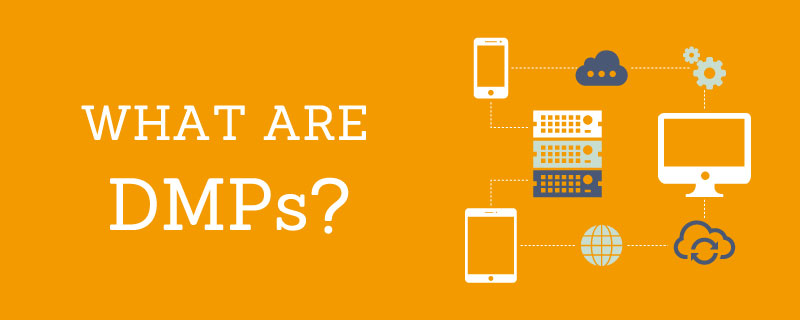BLOG
Guide to Data Management Platforms
In the world of digital marketing, there’s always some new technology to use that will make life easier for marketers. As marketing automation has taken off to such extreme heights, marketers are now looking to the next great technology: data management platforms.
Hard to keep up with the Digital Market Trends?
Not sure what these platforms are or how you can use them?
Check out our beginner’s guide to data management platforms (DMPs) and start learning how you can make your marketing even more targeted and fulfilling.
Data Management Platforms v. Demand-side Platforms
In order to fully understand DMPs, we must first look at their relationship with demand-side platforms.
Demand-side platforms (DSP) buy digital advertising through automation. These platforms can purchase digital, mobile, search and video ads on a variety of websites. They do so without any sort of human interaction. Before, most advertising was sold through sales people, but now DSPs have replaced them in some capacity. This makes the buying process cheaper and faster.
Using the information already in a company’s DMP, the DSP synthesises the information and tells advertisers which available impressions on the ad exchange make the most sense for a company. The DSP might advise using one type of ad for a certain demographic and another ad choice for another demographic.
How Data Management Platforms DMPs work
A DSP will synthesise the data contained in the DMP. The DMP holds all your information and translates it in a way that marketers can successfully use. Unlike regular database systems that usually keep track of just names, addresses and email addresses, among other things, a DMP also collects cookie IDs and online user behaviour.
To sum it all up, a DMP collects user information and translates it so your DSP can synthesise the information and make ad purchases based on what the DMP recommends. It is also important to note that information from a DMP can be used to buy ads from ad exchanges and networks. You are not limited to DSPs for your ad-purchasing needs.
Collect data successfully with DMP
It all comes down to the amounts of data you collect. By synthesising this data, your DMP will be able to better advise you on how you should target your audience based on where they hang out.
What’s more, a DMP does not only rely on your data alone. DMPs combine first party and third party data to give you the most accurate recommendations possible. Third party data includes information that the platform has already collected for you.
Say you’re a financial firm who wants to target a certain group of leads. You choose those leads through your first party data using the sign-up forms they’ve filled out or any other type of lead-generation action the leads have completed. Now using the third party data, you can overlay your lead data with each person’s social media handles. That means you can now target those leads across certain social media platforms, taking out ads and targeting those leads even closer.
What’s more is that you can also target their friends and potentially extend your reach even further. The possibilities are endless with DMPs and as you get better at using them, you’ll be able to create hundreds of highly-targeted campaigns
Best DMPs
If you think you’re ready to invest in a DMP, then you have many different options. All of them offer great features and will help you better understand what your data means and how you can use it. All of these platforms are also user-friendly so you won’t have to waste too much time learning to use your new software.
Here are some of our favourite DMPs.

Oracle
Oracle’s DMP promises to “turn insight into action.” The DMP offers audience data management that allows marketers to browse through their own data and create a number of key targets for all sorts of campaigns and potential campaigns. The audience data marketplace combines marketing information collected from over 30 professional data providers. This gives you access to over 700 million anonymous customer profiles and 40,000 data attributes.

IgnitionOne
Forrester called IgnitionOne’s DMP a “strong performer” in 2013. It remains true today. With its user-friendly interface, IgnitionoOne helps marketers track their customers across multiple channels and devices. It combines both first and third data together to give marketers the most accurate picture of their audience available. This data will help you market your audience through digital ads, email, social ads, call centres among other methods.

Adobe Audience Manager
Adobe has created some of the most universal software we know. Ranging from Photoshop to Indesign to a number of other great products. Audience Manager provides what it called 360-degree views of customers. By combining knowledge from first and third parties together, it helps marketers get the most in-depth view of customers possible. Audience Manager also helps marketers make as many segments of their audience as possible. Finally, it advises them on how to market to those segments.
Now that you’ve gone through our guide to DMPs, what questions do you have for us? If there anything about DMPs that we didn’t cover? Share your thoughts with us!











